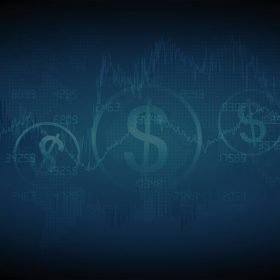Student Loan Forbearance Update
By Terry Savage on December 14, 2021
Update on 12/23/21: See first paragraph below written two weeks ago. Well, ,a “student loan forgiveness miracle” has happened!
The day of reckoning has been postponed to May 1, 2022! The politicians felt the pressure! Now what should you do? Will this be followed by another extension — or perhaps a fixed amount of loan total forgiveness? I can’t handicap those possibilities. But I can give you some suggestions:
– If you were planning to start repayment next month, just set the money aside in a money market deposit account. If and when repayments start, you’ll want to send in a lump sum just before the end of forbearance. That will go straight to the principal of your loan, reducing the overall interest burden.
– If you have a lump sum, set it aside and wait to see if another miracle happens, partial loan forgiveness. At least interest is not currently accruing so you don’t lose by waiting.
– Do follow the instructions below about finding your loan servicers, updating your address, and being ready to jump if some new bill passes before May 1st.
Remember, 2022 is a Congressional election year — and politicians do a lot of strange things to buy votes. There are over 40 million student loan borrowers, and that’s a lot of potential votes!
*****************************************************
Stop waiting for a student loan forgiveness miracle, and start preparing to resume or restructure your student loan payments by February 1, 2022. Forbearance began in March of 2020, and ends on January 31, 2022. In the interim, no interest accrued and no payments were required. That breather is coming to an end, and you need to get organized about a plan for going forward.
The possibility of a full or even partial student loan forgiveness program was raised on the campaign trail. But like many other political musings, it has fallen by the wayside as the Administration and Congress wrangle over the debt ceiling, the Federal budget, and social infrastructure spending.
It’s not as if the current administration has done nothing to deal with this $1.8 trillion student loan albatross that is impacting 43 million borrowers. There have been several rounds of loan forgiveness (in March, July and August 2021) for loans made to students of bankrupt or fraudulent institutions (like Corinthian Colleges, which shut down in 2015). And there has been more than $5 billion of loan forgiveness for permanently and totally disabled borrowers.
Also, the current administration is taking action to make more borrowers who work for non-profits eligible for Public Service Loan Forgiveness, which requires 10 years of employment with a qualifying non-profit. In more than a decade of this program under previous administrations, fewer than 5,000 loans had been forgiven. That’s changing, and you can learn more about this PSLF program at StudentAid.gov.
But those adjustments are a drop in the student loan bucket, leaving millions of borrowers with the task of dealing with older student loans, some of which carry rates as high as 8%. Federal borrowers do have a one-time opportunity to consolidate loans at lower rates, but private lenders rarely negotiate a rate cut or offer forbearance.
Get Organized for Resuming Repayment
Now it’s time to get organized to restart those monthly payments. Here are a few tips to get you ahead of the curve:
• Contact your loan servicer. They will be sending out emails and letters advising you to set up a repayment plan. But you might have moved in the interim, or those emails could be mistaken for spam. It’s your job to update your information at each and every loan servicer.
• Make a plan to start repayments. That might mean setting up an automatic payment with your checking account, or resuming those suspended payments.
• Apply for an income-based repayment plan. If you lost your job, or your income has dropped, you can set up a plan that requires low monthly payments (although over the long run you’ll pay more in interest). That’s better than a default on your credit report.
And here’s one tip. While forbearance is still in effect, any payments you make in December or January will be credited against principal. So, if you can send some money now, it will lower the balance on which you will be paying interest in the future! Every little bit helps.
Don’t procrastinate. The student loan repayment issue will make headlines in late January, and the servicers will be overloaded. The time to act is now, before the year-end. To learn more about the end of forbearance go to www.Studentaid.gov. There you can securely log in to your account to find your outstanding Federal student loans. For each loan you’ll see the phone numbers for your loan servicers so you can update your contact information and work out a plan to resume payments.
The worst thing you can do is ignore this payment re-start. It’s far better to make a plan for reduced payments than to ruin your credit. And that’s The Savage Truth.




